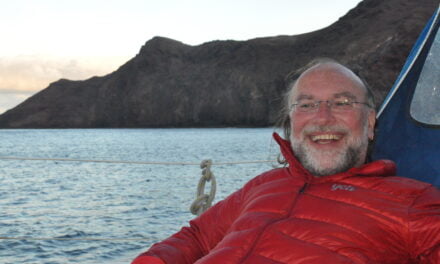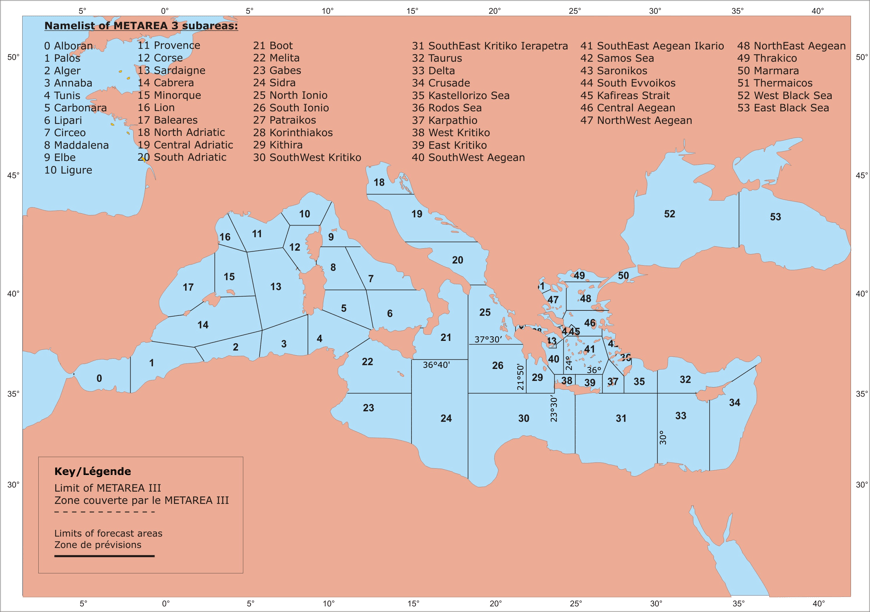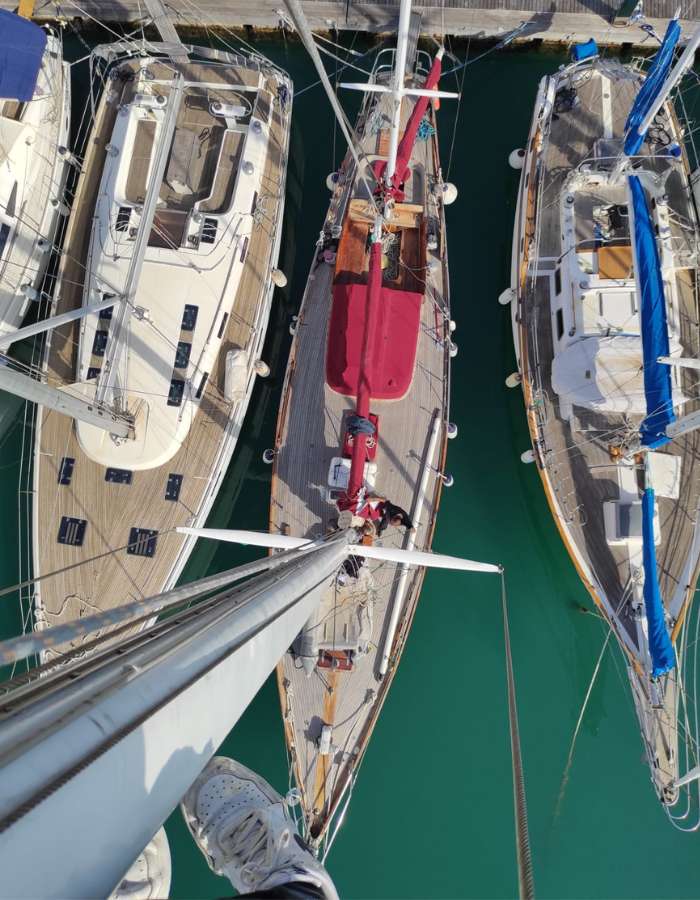The voyage from Europe to Asia or East Africa is one of the most thrilling passages a sailor can experience, but it is also fraught with challenges, from unpredictable weather patterns to navigational hazards. Whether you are sailing for leisure, Building Miles, or delivering a yacht, a clear understanding of the best routes, seasons, and dangers along the way is essential for a safe and successful journey.
This blog provides seasoned advice on the optimal routes, common hazards, and how best to time your passage, ensuring that you are well-prepared for the journey. And if the journey becomes overwhelming, Seven Seas offers expert yacht delivery services to move your vessel from one port to another, so you don’t have to face the trials of open-ocean navigation alone.
The Optimal Routes from Europe to Asia and East Africa
There are two primary routes to sail from Europe to Asia or East Africa:
1. The Suez Canal Route (Europe to Asia)
The Suez Canal route is the most direct passage to Asia from Europe and is widely used by sailors and commercial vessels alike. It offers a relatively straightforward journey, avoiding the need to round Africa’s southern tip.
- Leg 1: Mediterranean to the Suez Canal
- Sail through the Mediterranean, using safe harbours like Gibraltar, Palma de Mallorca, or Malta to provision and rest.
- Continue toward Port Said, the gateway to the Suez Canal.
- Leg 2: The Suez Canal
- The canal transit typically takes one day and is subject to scheduling based on traffic. On entering the Red Sea, expect strong northerly winds and hot, arid conditions.
- Leg 3: Red Sea to Indian Ocean
- Sailing down the Red Sea involves negotiating busy shipping lanes, strong winds (especially in summer), and military zones. Once you reach the Gulf of Aden, caution is needed due to the presence of Somali pirates.
- Enter the Indian Ocean, sailing towards your Asian destination, such as India, Sri Lanka, or Thailand.
2. The Atlantic and Cape of Good Hope Route (Europe to East Africa and Asia)
The alternative route involves sailing down the Atlantic, rounding the Cape of Good Hope, and entering the Indian Ocean. This route is ideal for vessels heading to East Africa or those who prefer to avoid the Suez Canal.
- Leg 1: Europe to Cape Verde via the Canary Islands
- Sail south along the Iberian Peninsula, with possible stopovers at ports like Lagos or Casablanca, before heading to the Canary Islands.
- From the Canaries, sail toward Cape Verde, a useful staging post before crossing the Atlantic.
- Leg 2: Heading South Near Brazil
- Unlike the traditional route which involves stopping at St. Helena (which places you against the prevailing current), it’s more efficient to sail closer to Brazil, using the Brazilian Current to your advantage.
- After passing the latitude of Brazil, you begin your approach towards Cape Town. This path avoids unnecessary resistance from currents, leading to a faster and smoother passage.
- Leg 3: Rounding the Cape of Good Hope
- The waters around the Cape of Good Hope are infamous for challenging conditions. The Agulhas Current, combined with strong westerly winds, can create dangerous sea states, including large rogue waves.
- Once around the Cape, the seas tend to calm as you sail northwards into the Indian Ocean.
Weather Patterns and Ocean Currents
1. Atlantic to Cape of Good Hope
- Best Route to Avoid Currents: By heading south closer to Brazil, you can take advantage of the Brazilian Current. This route bypasses St. Helena, where the currents are often against you, making it a less favourable option for this leg.
- Winds: The South-East Trade Winds are reliable and steady in the South Atlantic, assisting your passage southwards until you approach the Cape of Good Hope, where strong westerlies prevail.
- Best Time: Aim to sail towards the Cape from November to March, when the Southern Ocean is less volatile.
2. Indian Ocean
- Monsoon Seasons: The Northeast Monsoon (November to April) and the Southwest Monsoon (May to October) dictate much of the wind and weather patterns in the northern Indian Ocean. Plan your passage according to these wind systems for a smoother sail.
- Agulhas Current: One of the world’s fastest currents, the Agulhas Current runs southward along the coast of South Africa. When westerly winds blow against it, this creates a dangerous sea state, with waves often reaching more than 20 metres. Plan your rounding of the Cape carefully to avoid such conditions.
Piracy in the Gulf of Aden and Somali Coast
The Gulf of Aden and parts of the East African coastline have long been known as piracy hotspots, particularly near Somalia. Although international naval patrols have reduced the risk in recent years, caution is still necessary when sailing through this region.
Piracy Statistics:
- Between 2010 and 2015, Somali pirates carried out hundreds of attacks, but efforts by the Combined Task Force 151 and other maritime coalitions have significantly reduced incidents.
- In 2021, there were fewer than 5 reported piracy attacks, though there is still potential danger, particularly for vessels that appear undefended.
For added security, consider:
- Sailing in convoy when passing through the Gulf of Aden.
- Using maritime tracking systems like AIS (Automatic Identification System) to stay in contact with local naval authorities.
- Contacting Seven Seas, which offers secure yacht delivery services through these high-risk areas.
Navigational Hazards
- Somali Piracy: As mentioned above, piracy is a concern in the Gulf of Aden and around Somalia. The use of convoys and staying close to naval corridors reduces risk, but vigilance is essential.
- Rogue Waves: The Cape of Good Hope is notorious for rogue waves, which can form when the Agulhas Current meets westerly winds. These waves can exceed 20 metres, making careful planning essential.
- Shallow Reefs: East Africa’s coast, particularly around Mozambique, Tanzania, and Kenya, is littered with coral reefs. Ensure your charts are updated and use radar to navigate safely through these waters.
Ports and Safe Havens
Along the passage to Asia and East Africa, there are several key ports that offer safe harbours, provisioning, and repairs:
| Region | Safe Ports | Facilities and Notes |
|---|---|---|
| Atlantic Coast | Lagos, Canary Islands, Cape Verde | Fully equipped marinas, excellent for provisioning |
| Indian Ocean | Dar es Salaam, Zanzibar, Mombasa | Great stopovers for repairs and provisions |
| South Africa | Cape Town | Major port for repairs, refuelling, and crew changes |
When Sailing Becomes Too Daunting – Call Seven Seas
For many yacht owners, the passage to Asia or East Africa can be challenging due to long stretches of open water, unpredictable weather, and potential hazards such as piracy or rogue waves. If you prefer to avoid these risks, Seven Seas offers professional yacht delivery services.
Our experienced captains and crew are well-versed in navigating these complex routes, ensuring your yacht is delivered safely and efficiently. We handle everything from passage planning to execution, so you don’t have to worry about rogue waves, piracy, or adverse currents. Contact us for a free quotation and let us take care of your yacht delivery.
Conclusion: Preparing for a Successful Voyage
Sailing from Europe to Asia or East Africa is a demanding yet rewarding experience. By choosing the right route, understanding the weather and ocean currents, and being aware of navigational hazards such as piracy and strong currents, you can ensure a safe and enjoyable passage.
If you lack the time or confidence to tackle such a journey, Seven Seas is here to assist with expert yacht delivery services. Let us handle the challenges of the ocean so you can focus on enjoying your next adventure.
Sources:
- Jimmy Cornell, World Cruising Routes, 7th edition.
- NOAA Ocean Currents Data for the Cape of Good Hope.
- International Maritime Bureau (IMB) Piracy Reports.








